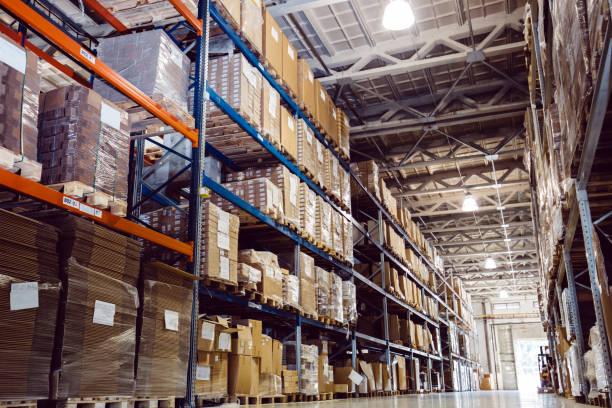Correct Way to Maintain Industrial Storage Racks
Industrial storage Racks are essential for keeping a warehouse or manufacturing facility organized and efficient. They provide a convenient and safe way to store materials, products, and equipment. To ensure the longevity and functionality of your storage racks, it’s crucial to implement a regular maintenance program. Proper maintenance not only extends the life of your racks but also enhances safety in the workplace. Here’s a comprehensive guide to maintaining industrial storage racks.
Regular Inspections:
· Begin with routine visual inspections of your storage racks. Look for signs of damage, corrosion, or wear and tear.
· Pay special attention to the uprights, beams, and wire decking, as these are the most critical components of the rack system.
· Check for any loose or missing bolts, nuts, or connectors. Tighten or replace them as needed.
Load Capacity:
· Ensure that your storage racks are not overloaded. Each rack has a specified weight capacity, and exceeding it can lead to structural damage and safety hazards.
· Regularly review and update load capacity labels or documentation for each rack to prevent overloading.
Cleaning and Housekeeping:
· Keep the area around your storage racks clean and free from debris. Dust and dirt can accumulate on the racks, leading to corrosion and making it harder to spot damage.
· Implement a regular cleaning schedule to remove dust and dirt. Use a broom, vacuum, or compressed air to clean the racks.
Protection Against Corrosion:
· Industrial storage racks are often made of steel, which is susceptible to corrosion. To prevent rust, paint or coat the racks with a suitable protective finish.
· Address any scratches or chipped paint promptly to prevent the spread of corrosion.
Rack Repairs:
· If you identify any damaged or bent components, such as beams or uprights, it’s essential to repair or replace them immediately.
· Consult with the manufacturer or a qualified engineer to assess the severity of the damage and to obtain the appropriate replacement parts.
Load Distribution:
· Ensure that loads are evenly distributed on the racks to avoid overloading specific sections. This helps maintain the structural integrity of the racks.
· Proper load distribution also reduces the risk of rack collapse and ensures the safety of employees.
Rack Safety Accessories:
· Consider installing additional safety accessories like rack protectors, guardrails, and safety netting to further protect your storage racks from forklift collisions and other potential hazards.
Employee Training:
· Train your employees in rack safety and maintenance procedures. They should know how to recognize and report damage or issues with the storage racks.
· Implement a reporting system so that employees can easily communicate any concerns.
Regular Rack Load Assessment:
· Periodically reevaluate the type and weight of items being stored on the racks. Adjust your storage plan as necessary to ensure optimal rack performance.
Documentation:
· Maintain detailed records of inspections, repairs, and load capacity information for each Industrial Rack in Delhi.
· Keep records of any modifications or additions made to the rack system.
Professional Inspection:
· Consider scheduling regular professional inspections by a qualified engineer or rack safety expert. They can provide an objective evaluation of your rack system’s condition.
In conclusion, proper maintenance of industrial storage racks is crucial to ensure both the safety and efficiency of your warehouse or facility. Regular inspections, load monitoring, and preventive measures can help extend the life of your racks and reduce the risk of accidents. By following this guide, you can keep your storage racks in optimal condition and maintain a safe working environment for your employees.
What are the Benefits of Damage Prevention?
Damage prevention offers numerous benefits across various contexts, whether it’s in the workplace, during transportation, or in daily life. Here are some of the key benefits of damage prevention:
Cost Savings: Preventing damage helps reduce repair or replacement costs. This is particularly important in industrial and business settings where damaged equipment or products can be expensive to fix or replace.
Enhanced Safety: Damage prevention often involves identifying and addressing potential safety hazards. In industrial settings, for example, preventing damage to equipment or structures can help avoid accidents and injuries.
Improved Product Quality: In manufacturing and distribution, preventing damage to products ensures that they reach the end consumer in the best possible condition. This helps maintain product quality and reduces customer complaints and returns.
Reduced Downtime: Equipment and machinery that are well-maintained and protected from damage are less likely to break down, leading to less downtime and higher productivity.
Extended Lifespan: Regular maintenance and damage prevention can extend the lifespan of equipment, reducing the need for replacements and capital expenditures.
Environmental Benefits: Preventing damage can reduce the environmental impact associated with the disposal and replacement of damaged items. This is increasingly important in our efforts to minimize waste and conserve resources.
Preservation of Assets: Damage prevention is critical for preserving assets in various contexts, such as protecting historical buildings, art, or important documents.
Enhanced Reputation: Businesses that prioritize damage prevention and quality control are often seen as more reliable and reputable by customers and partners.
Risk Mitigation: In some cases, damage prevention can help mitigate legal and financial risks. For example, properly maintaining a property can reduce liability in case of accidents or injuries on the premises.
Improved Efficiency: Damage prevention can streamline processes and operations by minimizing the need for interruptions, repairs, or adjustments. This can lead to more efficient use of resources and time.
Long-Term Savings: While investing in damage prevention measures may have upfront costs, the long-term savings in terms of reduced maintenance, repairs, and replacements often outweigh the initial investment.
Customer Satisfaction: In retail and customer-oriented businesses, preventing damage to products and deliveries enhances customer satisfaction and loyalty. When it comes to quality, always choose MEX Storage Systems Pvt. Ltd., Delhi, India, one of the most preferred Storage Rack Manufacturers for all kinds of industrial rack solutions. Give us a call and tell us your requirements.
Enhanced Safety Culture: In workplaces, damage prevention fosters a culture of safety and responsibility among employees, which can have far-reaching positive effects on the work environment.
Compliance with Regulations: In certain industries, damage prevention measures are necessary to comply with government regulations and industry standards, helping businesses avoid fines and penalties.
Peace of Mind: Knowing that you have taken steps to prevent damage can provide peace of mind, whether it’s protecting your home, your business assets, or your personal belongings.
In summary, damage prevention offers a wide range of benefits, from financial savings and safety improvements to enhanced quality and efficiency. Whether in a personal or professional context, taking proactive measures to prevent damage is often a wise and responsible choice.




